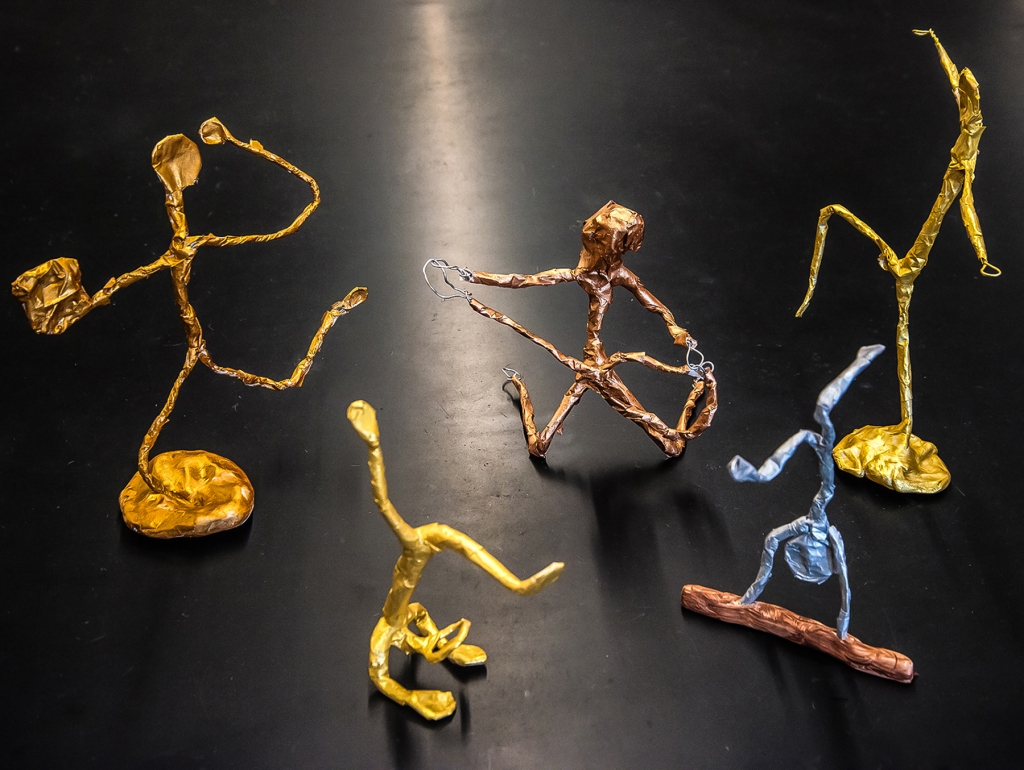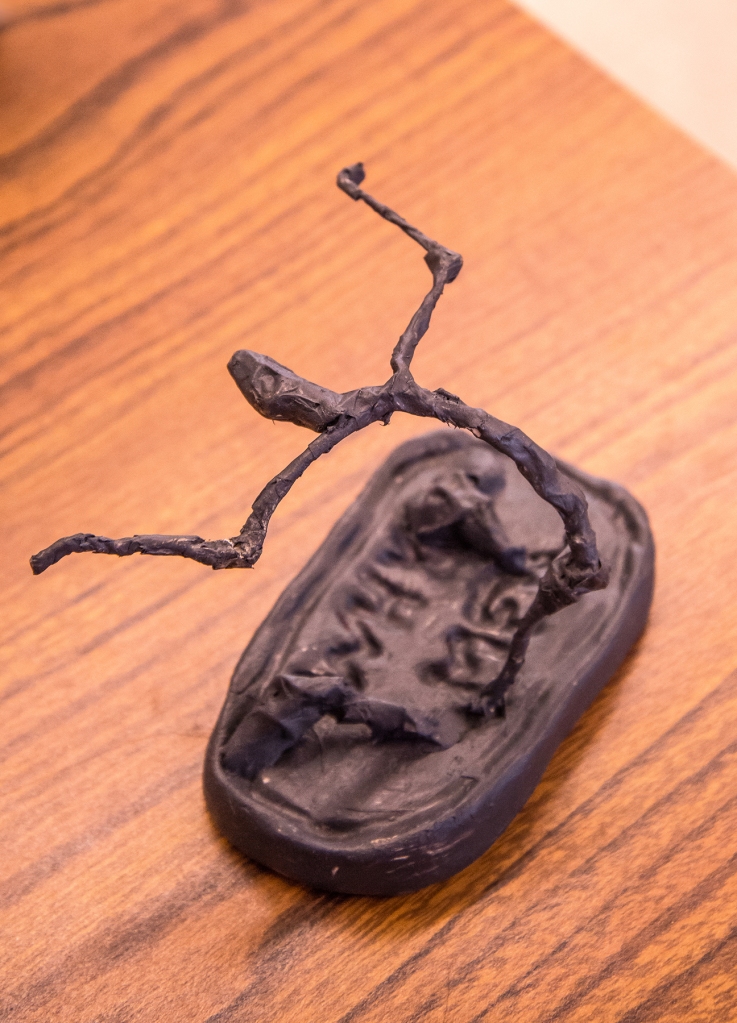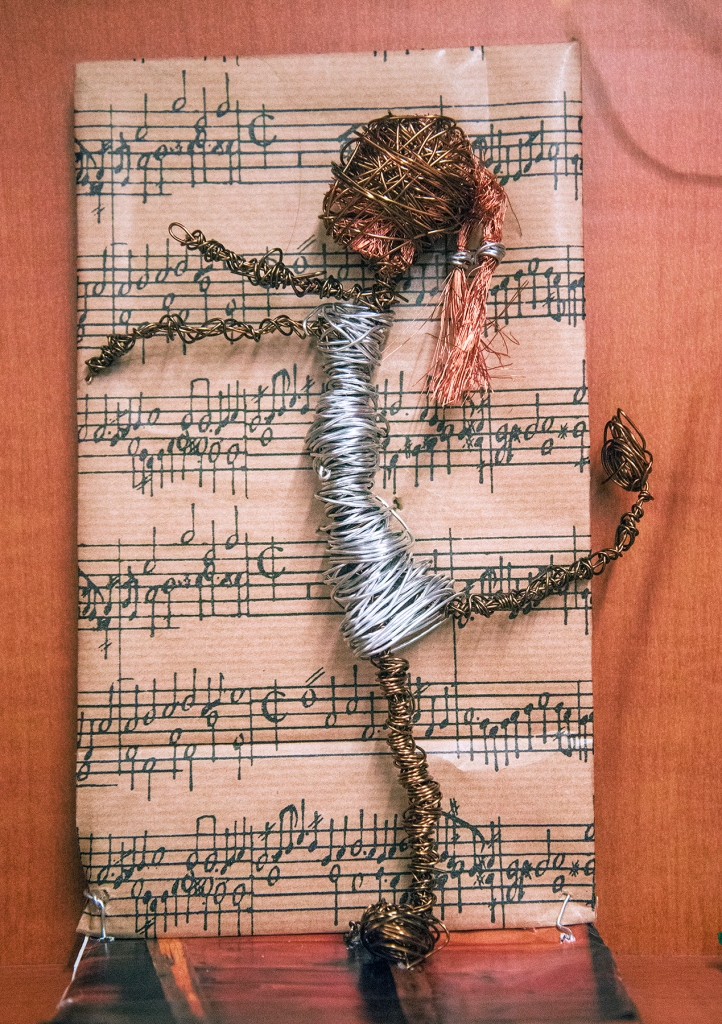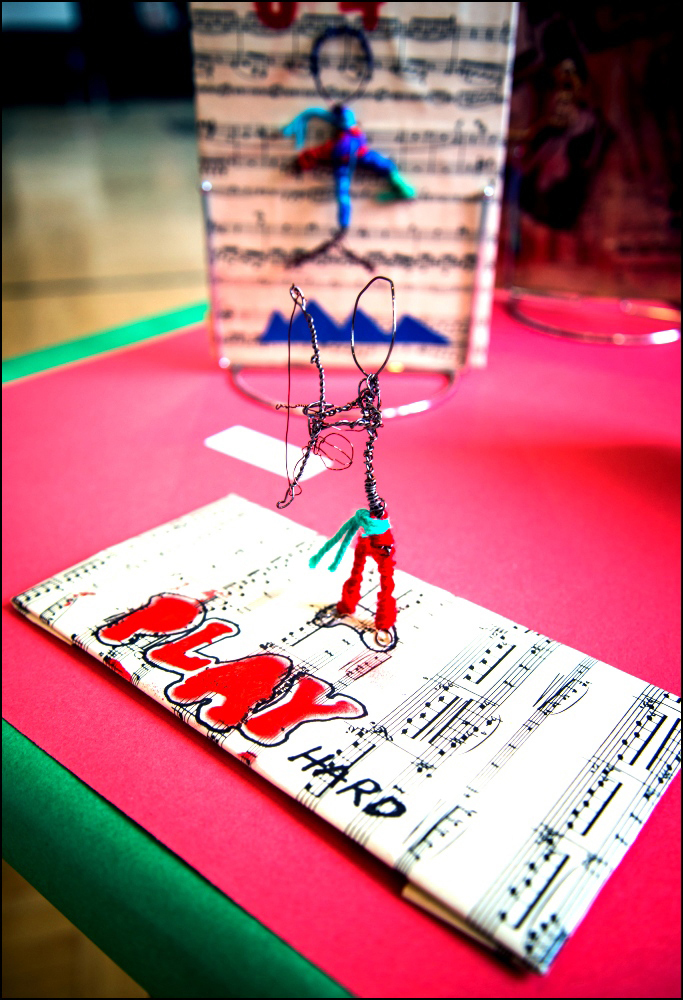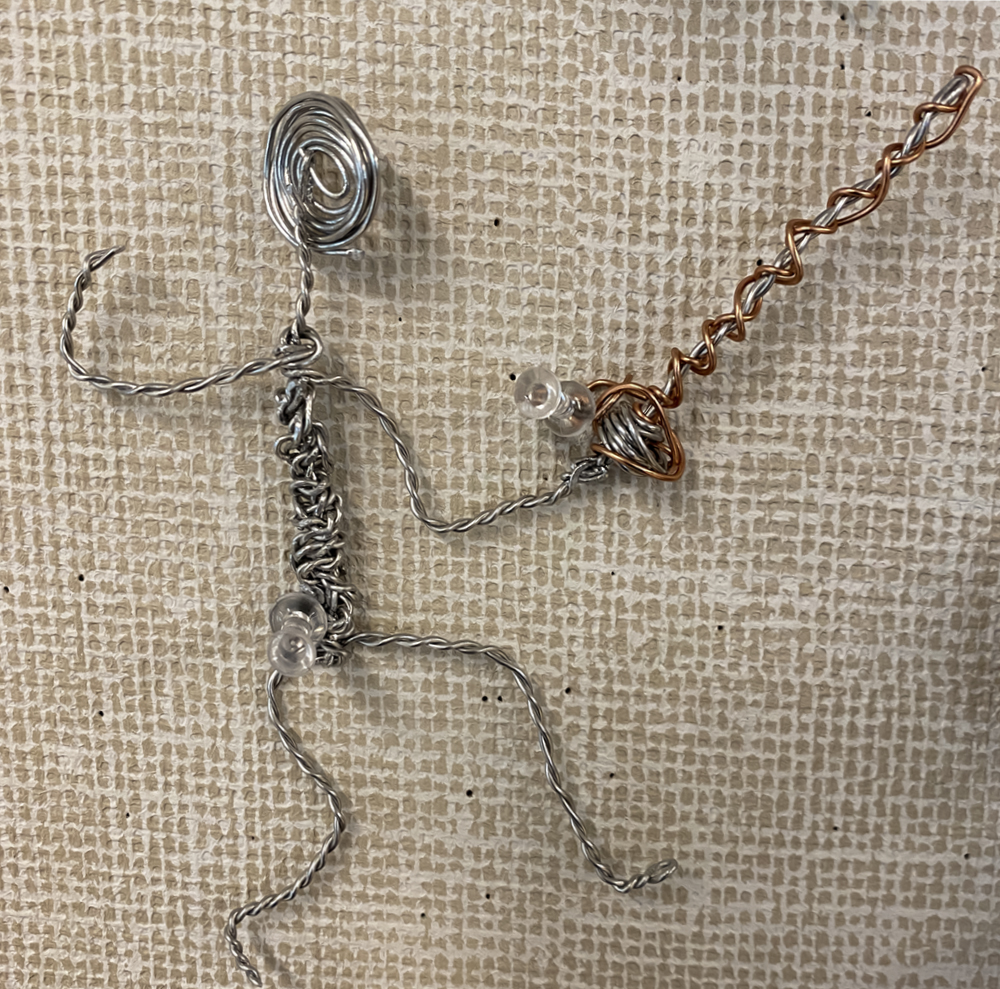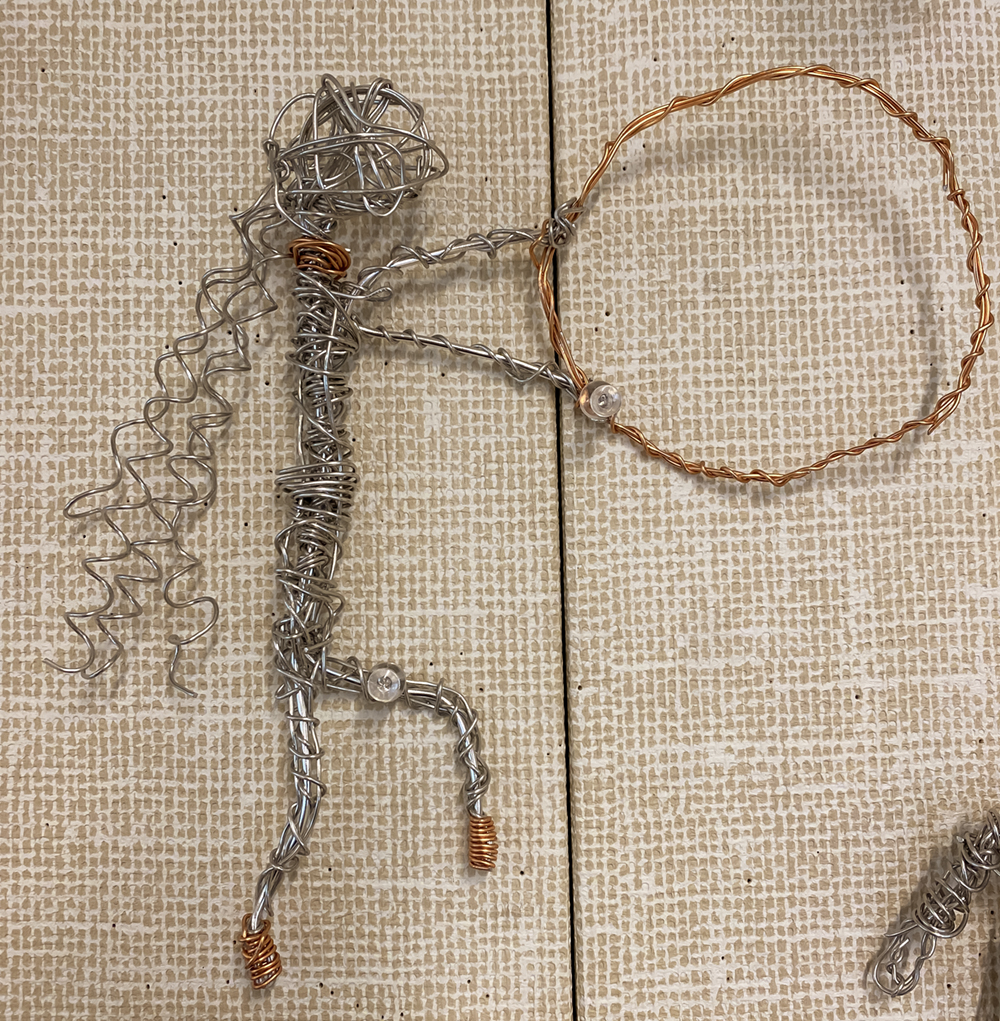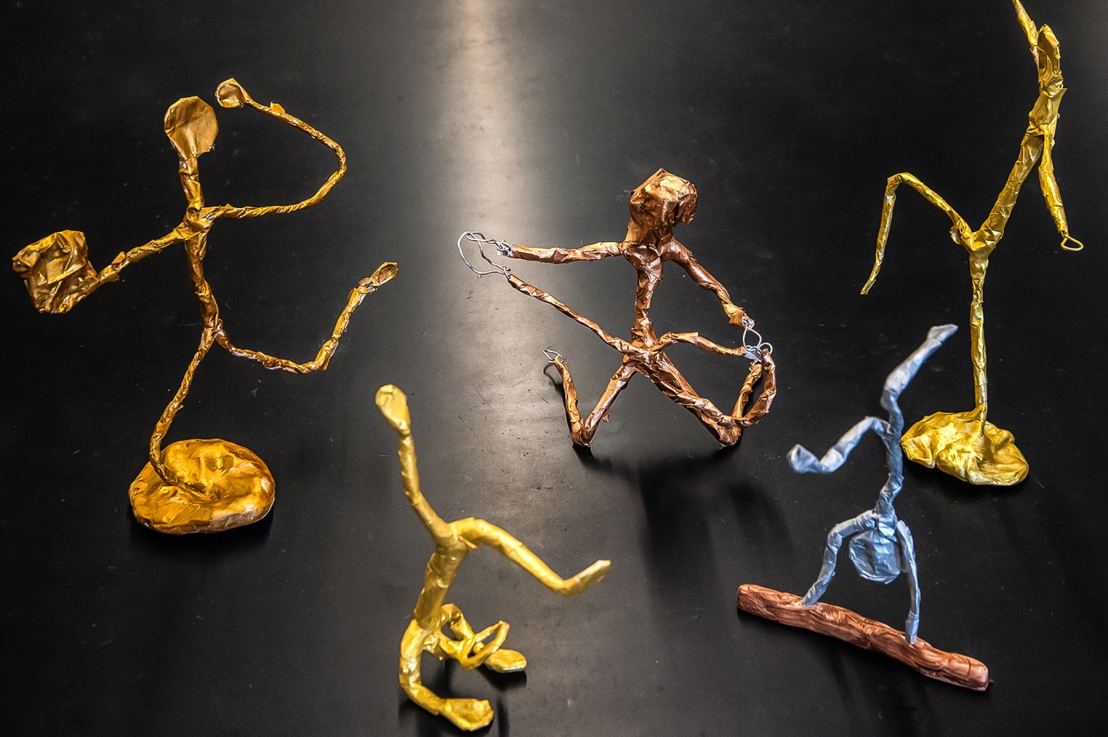Description of the Unit –
Observing the distorted gestural figure sculptures of Alberto Giacometti (1901-1966), as well as the elongated, rhythmic figure paintings by Ernie Barnes (1938-2009) that both emphasize and exaggerate long limbs, students will create similarly distorted, gestural sculptures primarily out of wire.
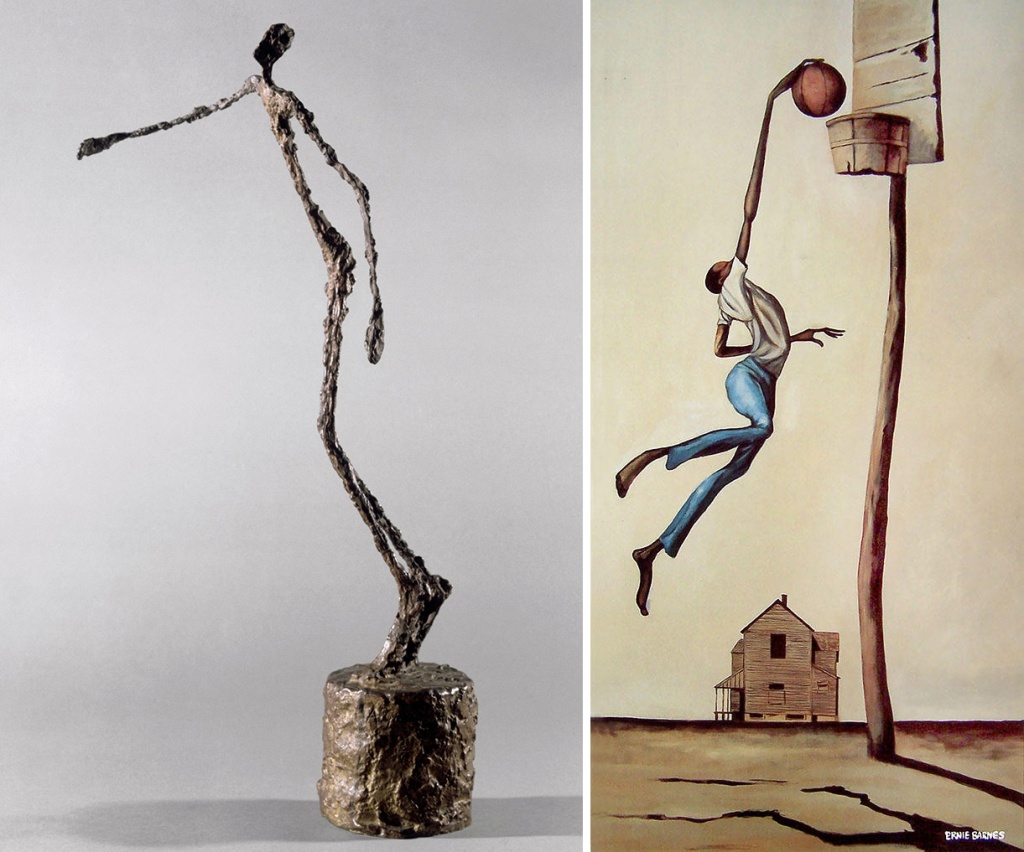
Activity statement –
Working with a variety of media is part of a comprehensive art education. Thin-gauge wire offers students an opportunity to think of three-dimensional expression, while its pliability gives students the opportunity to create diverse lines and shapes. This project also involves other steps, such as applying a sort of papier-Mâché to the wire, creating a base out of clay, coating the whole thing in paint, and then drawing the shadow of their figure on paper. Such a long-term project is useful for teaching perseverance and problem-solving skills.
Our inspiration will be drawn from the surreal, discomfiting and bleak figure sculptures of Alberto Giacometti as well as the confident, vibrant and elongated portraits by Ernie Barnes. Both artists created artwork that spoke to the time and place within which they each lived, evoking very contrasted emotions. Each artist also tended to elongate and distort the limbs in the figures they represented, Giacometti in his bronze sculptures, and Barnes in his paintings. The results, of course are very different, and make for generative student discussion.
Goals –
Students should…
Understand:
- The socio-historical contexts within which Alberto Giacometti and Ernie Barnes lived and made their art
- The fundamental ways in which three-dimensional artistic expression varies from two-dimensional expression
- How movement can be expressed in a figure sculpture
- What is meant by emphasis and distortion in art-making
Know:
- Who Alberto Giacometti and Ernie Barnes were and why their work is important
Be able to:
- Recognize work by Giacometti and Barnes
- Define emphasis and distortion in art
- Create a wire sculpture that expresses the distortion of a figure
Objectives –
- Students will: Create a figure sculpture out of wire that evokes a sense of movement and exaggeration (emphasis and distortion).
Resources and materials –
- Giacometti and Barnes exemplars
- Spools of wire in a thin gauge
- Various kinds of pliers and cutters for cutting and shaping wire
- Model magic clay (for those sculptures that need a base)
- Scissors
- Paper for papier-mâché
- Mod podge
- Paint or spray paint
Questions –
- In what ways do Giacometti’s sculptures demonstrate distortion or exaggeration?
- How do Giacometti’s sculptures evoke movement?
- How do Giacometti’s sculptures make you feel?
- What do you think these sculptures are meant to represent?
- Are they attractive to you? Why or why not?
- In what ways do Barnes’ paintings express distortion or exaggeration?
- How do Barnes’ paintings evoke movement?
- What do Barnes’ paintings say about the people represented? Why?
- What is the focal point of your sculpture?
- What is the most important aspect of your sculpture?
- What aspects of your figure are you distorting?
- What was the most challenging part of making your sculpture? The most fun?
Evaluation –
Did students:
- Express ways in which sculpture differs from two-dimensional artistic representation?
- Discuss their thoughts and feelings regarding the work observed by Barnes and Giacometti?
- Try to evoke movement in their sculptures?
- Use exaggeration or distortion?
- Engineer ways in which to connect wire pieces?
- Did students take risks to create a visually interesting sculpture?
Informal:
- Student questions
- Group discussions
- Oral responses to essential questions
- At least one finished piece
- Elaboration and risk-taking


